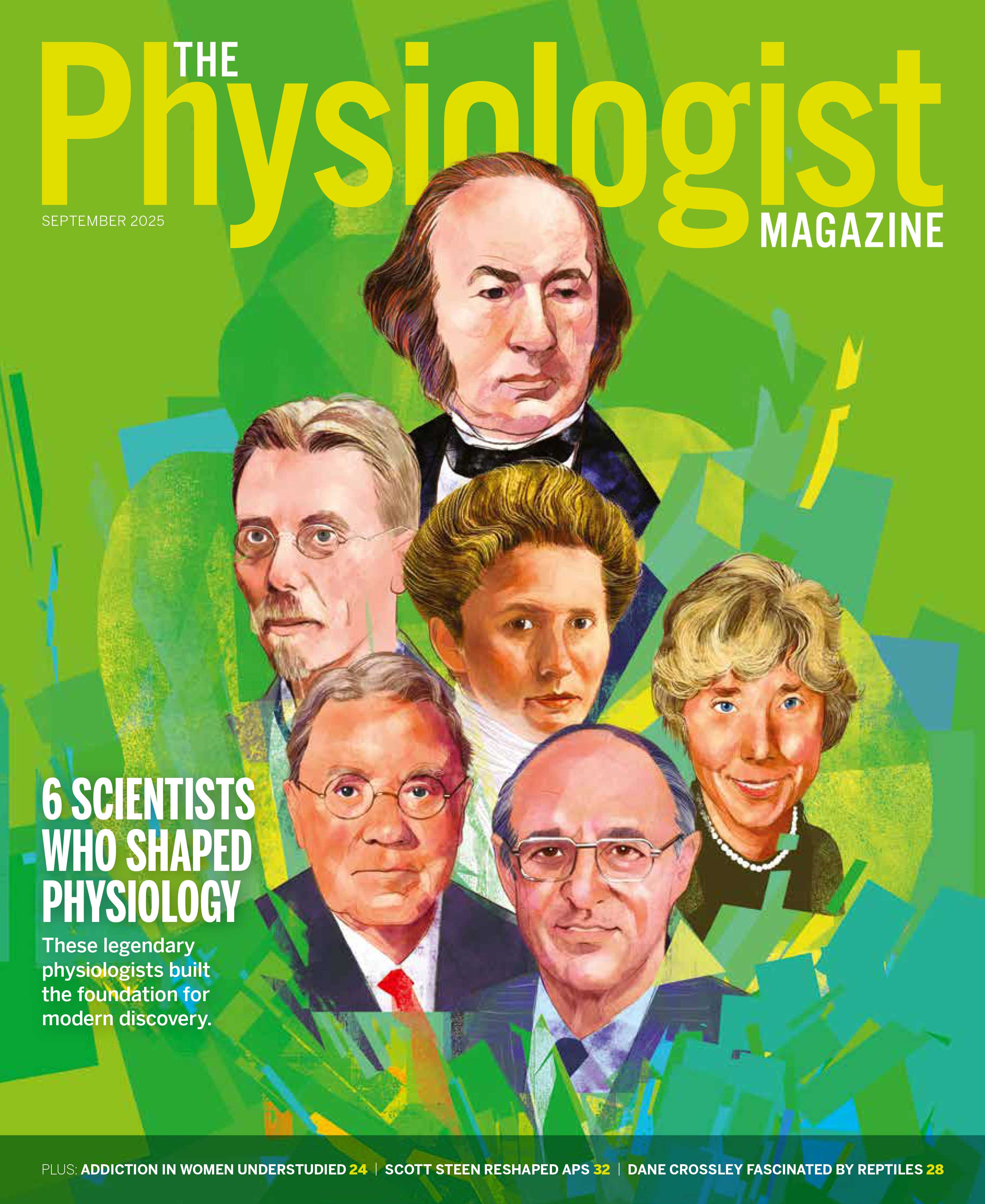Farm to Lab
Meet Willis “Rick” Samson, PhD, DSc, FAPS: discoverer, lab leader and 96th president of APS.
By Mike De Socio
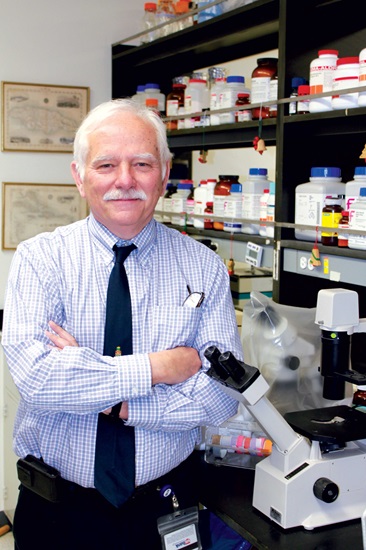
When Willis “Rick” Samson, PhD, DSc, FAPS, was growing up in Syracuse, New York, he loved spending time at his grandfather’s dairy farm.
The property, located about an hour away, had been in the family since the turn of the century and had grown to encompass many of the neighboring outfits as tenant farmers. Samson would eagerly chip in, helping his uncles milk the cows and handle all sorts of manual labor. He didn’t mind the 4 a.m. wakeup calls. He simply loved being around the animals and learning all he could about them.
Going into high school, Samson didn’t have any grand plans or academic ambitions. He ran cross-country and track and figured that could be his ticket into college. But as he was considering the path his life might take, Samson also heeded the advice of his father.
“I realized what my father had said: ‘Farming is a tough life,’ which is why [my dad] decided to go the academic route” and become a medical doctor, Samson says. “And I made the same decision. Being a farmer is awfully hard work. I admire them tremendously. But that wasn’t for me.”
Samson’s interest in animals did translate into a scientific career, just not right away. It wouldn’t be until many years (and detours) later that he found his way back to biology, eventually settling into the field of physiology. Samson is now a professor of pharmacology and physiology and director of biomedical science graduate programs in the School of Medicine at Saint Louis University (SLU). And he’s the new president of APS, where he hopes to leverage his deep roots in the organization to lead it to an even brighter future.
Back and forth to biology
Samson arrived at Duke University in 1964 ready to fill his course load with biology labs, but there was just one problem: All of the labs were in the afternoon, the same time as his cross-country practices. He settled for the next best thing: enrolling in the morning chemistry labs and declaring a chemistry major.
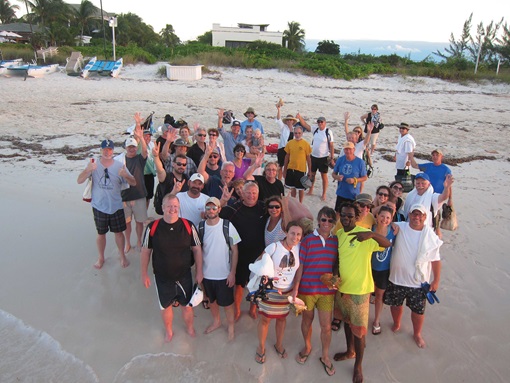
Samson was content to coast along in that track for a while, but in his senior year he finally managed to squeeze a biology lab into his schedule. The course was taught by Knut Schmidt-Nielsen, PhD, a renowned animal physiologist. Samson was utterly captivated by the entertaining, somewhat quirky, professor and felt his interest in animals reignited.
But shortly after graduation, he was bumped off course again. “Uncle Sam knocked on my door, and I ended up first spending a brief time in the Peace Corps and then going into the Army to complete my military mandatory service during the Vietnam War,” Samson says.
After serving with the Peace Corps in the Philippines, he spent three and a half years with the Army in Europe.
“When I got out, I didn’t know really what I was going to do, but I still had this interest in biology. So, I took some more courses in biology and decided that physiology was pretty interesting,” Samson says.
He initially wanted to study at the University of California, San Francisco but was redirected to study under Samuel MacDonald McCann, MD, a neuroendocrine physiologist at the University of Texas (UT).
“I hopped in the car and drove to Dallas for graduate school,” Samson says, where he completed a PhD at the UT Southwestern Medical Center.
Samson forged an academic career that took him from Texas to Missouri and North Dakota, before landing in his current role in St. Louis—coincidentally, his wife’s hometown—some 20 years ago. His twin adult sons also live in the city, one directly across the street with three grandsons.
‘Let the data tell you where to go’
For a long time, Samson’s research focused on peptide hormones and their role in reproductive physiology. He eventually pivoted to vasoactive peptides—hormones that act in the kidney and the vasculature—but always stuck with peptides. That is, until about a decade ago, when a graduate student in Samson’s lab shifted the focus of his research once more.
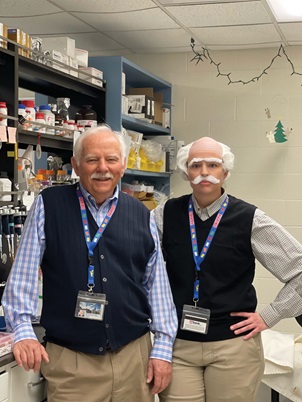
“She got me interested in receptors, the proteins that take the message that hormones deliver,” Samson says. That grad student was Gina Yosten, PhD, who’s now a tenured associate professor alongside Samson at SLU. (Yosten was recently elected to APS Council and serves as the youngest editor of an APS journal, American Journal of Physiology-Regulatory, Integrative and Comparative Physiology.) “We’ve had a longstanding successful career looking at receptors. She’s a remarkable scientist,” Samson says.
“Being a farmer is awfully hard work. I admire them tremendously. But that wasn’t for me.”
Their lab has been guided by a dictum that Samson picked up earlier in his career: “Let the data tell you where to go with your science.”
The data have led Samson and Yosten’s lab to discover two new hormones and identify five new receptors. “For years, I did work where we tried to figure out, ‘OK, what does this thing do, or where does it act?’ but we didn’t really discover new things; we were sort of characterizing things that were known. And what we’ve been doing the last 15 or so years is actually discovering things that no one knew existed,” Samson says.
Those discoveries could be leveraged for the development of therapeutics. One of the hormones they discovered, for example, could be manipulated to help people with Type 1 diabetes who overshoot their insulin and become hypoglycemic. Another hormone could lower blood pressure for pregnant people who have preeclampsia. And one of the newly identified receptors could be used to treat chronic pain or eating disorders.
“You discover things and then you can’t be narrow in your focus,” Samson says. “You have to say, ‘OK, so you found this, now what do you do? What does it do? Where does it act? What can we leverage it into?’”
Leading APS into the future
Samson’s connection to APS goes back to the earliest days of his academic career, studying under McCann in Dallas. McCann was active in APS and brought Samson along for the ride.
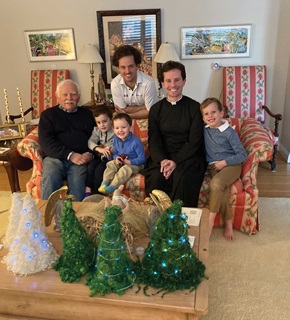
“There were a lot of characters, but also, it was a very welcoming environment. I mean, even as a postdoc, I got introduced to one after another president of APS,” Samson says. “I realized that it was a place where you could be included, if you worked hard, and were honest, and were a good communicator.”
He caught the bug and quickly ascended through the ranks as a committee trainee, then committee member and eventually editor of the American Journal of Physiology-Regulatory, Integrative and Comparative Physiology.
As he takes on the presidency of APS, Samson hopes to bring that welcoming, invigorating experience he had decades ago to a new generation of young scientists.
“I think the most important thing that the president can do is encourage people to be involved,” he says. “And I’m very concerned about the fact that it’s a very old Society; the average age is well over 45. We need to attract young members, get them involved, and keep the Society going by refilling the spots that retirements open up.”
He’s also planning to focus on the finances and governance of APS. “With open access coming, it’s really going to decrease our income stream,” he says. “We’re going to have to really look at our financial model very carefully.”
He’ll also continue the work of the task force to modernize the century-old governance structure of the Society, an effort he’s been leading under APS Immediate Past President Dee Silverthorn, PhD, FAPS.
“We have to be transparent in what we’re doing; we have to get people involved and invested. And we have to focus on the future,” Samson says.
This article was originally published in the May 2023 issue of The Physiologist Magazine.
At APS, “I realized that it was a place where you could be included, if you worked hard, and were honest, and were a good communicator.”
The Physiologist Magazine
Read the Latest Issue
Don’t miss out on the latest topics in science and research.
Contact Us
For questions, comments or to share your story ideas, email us or call 301.634.7314.


